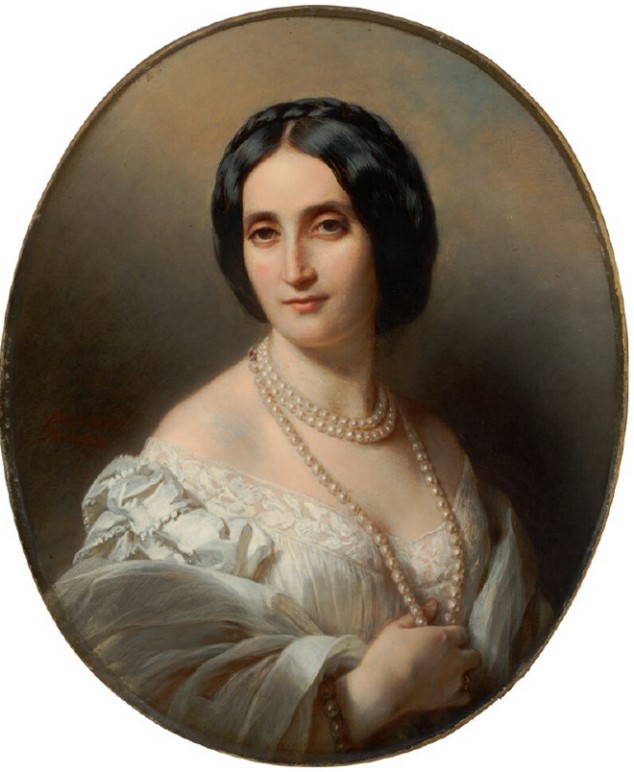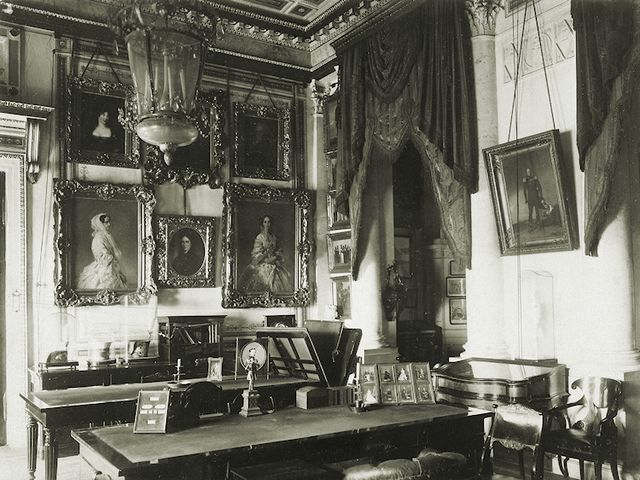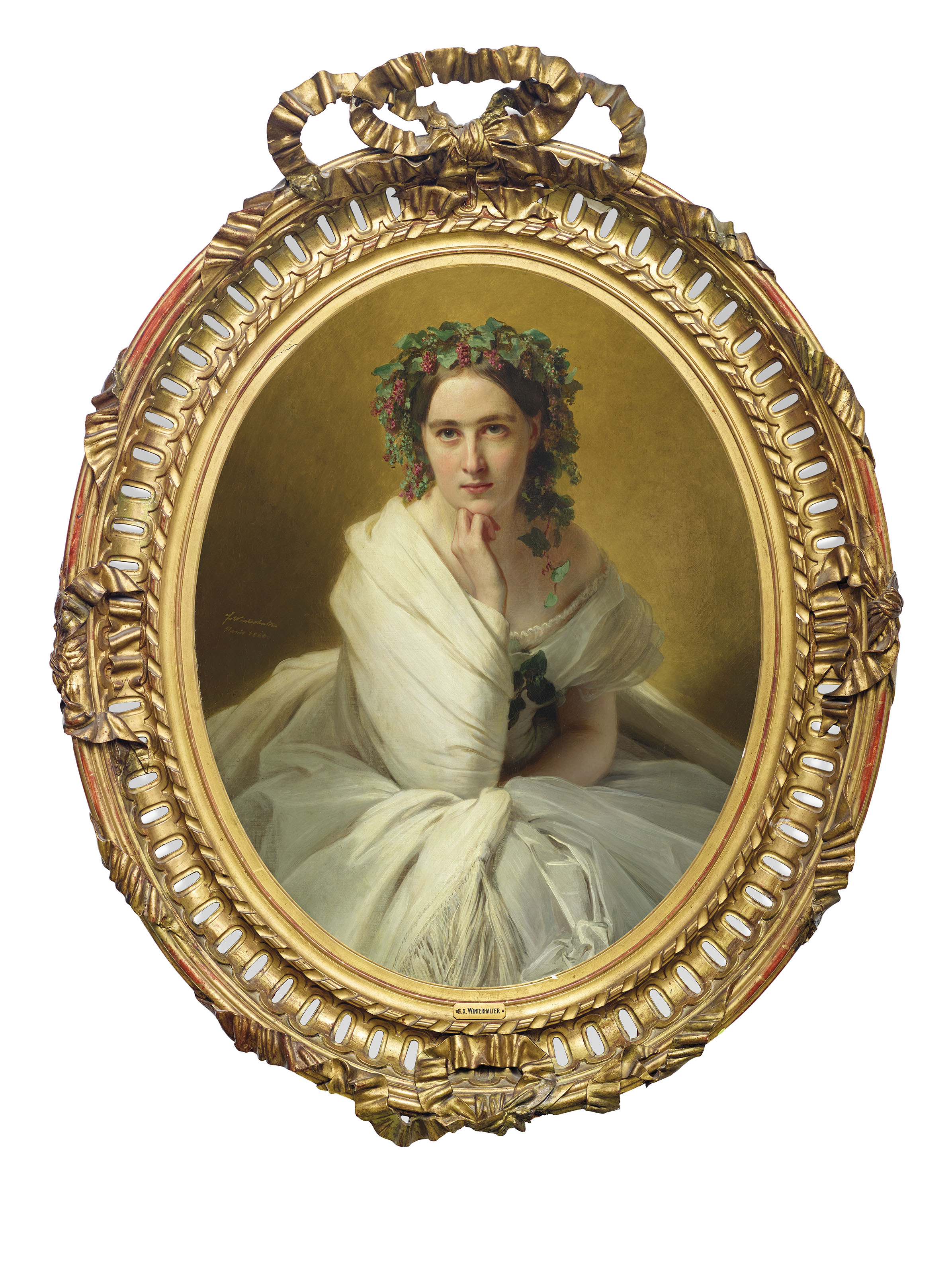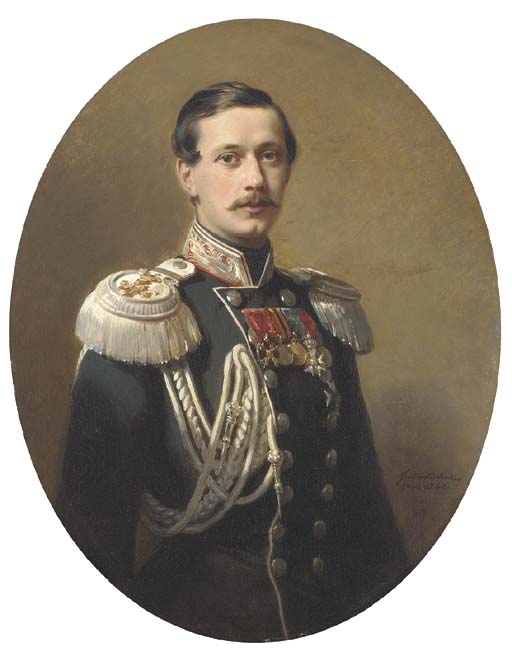A beautiful and rarely seen portrait of the Viscountess Esher is coming up for auction at Christie’s, in London, on 1 December 2022: https://onlineonly.christies.com/s/british-european-art-online/franz-xaver-winterhalter-german-1805-1873-151/173049
The sitter is represented on an oval-shaped canvas, against an abstracted background of darkened yellowish and bluish tints; the shadows thrown by her shoulders suggest an intimate interior environment. She is shown at half-length, in a semi-turn to the right, with her head slightly tilted to the left, turning en face to meet the viewer’s gaze. She is wearing a white silk chemise richly decorated with lace, and with lace-edged satin ribbons at the shoulder. A white gauze shawl is thrown over her right arm and is wrapped around just below her shoulders. Her jewellery comprises of a pearl necklace encircled thrice around her neck, and fastened with a golden, gem-set clasp. With her right hand, she fingers gently the pearls of the longest strand. A bracelet of large pearls is visible on her wrist; a gold and gem-set ring is seen on her ‘wedding’ finger.
Following her mother’s marriage to John Gurwood, a British officer and diplomat, Eugénie Mayer felt equally at home in Paris and London. Her exotic colouring and (what was described as) ‘eastern beauty’, with large, almond-shaped, dark-hazel eyes, and an abundance of black, wavy hair, dressed over the ears and crowned by a plaited chignon, inspired writers, poets, and painters on both sides of the Channel. She was extremely proud of her long neck and naturally slim, sloping shoulders, showing them off to their best advantage in low-cut gowns, and accentuating them by the clouds of weightless gauze shawls. There was never a shortage of suitors from titled and wealthy admirers, but the questions over the legality of her mother’s separation from Eugénie’s father, Lazare Mayer; the rumours of her being an illegitimate daughter of the Emperor Napoleon; and (what was euphemistically referred to as) ‘irregularities’ in the private lives of her aunts (including a love affair with the celebrated French writer, Alexandre Dumas), kept marriage proposals at bay.
By the time Eugénie turned thirty, she resigned herself to the life of spinsterhood. She accompanied her mother on regular peregrinations, forming meaningful connections within political, social, and literary circles on both sides of the Channel. That is until the day when a young aspiring lawyer, Baliol Brett, saw her across the crowded room and became determined to make her his wife. A protracted engagement, during which Brett had focused on building up his practice and career, culminated in their marriage in 1850, and the birth of the couple’s first child in 1852.
The relatively modest scale of Winterhalter’s portrait, its oval shape (popularly associated with intimate miniatures), the physical proximity of the sitter within the shallow space, the direct gaze, a comparatively modest attire reminiscent of a peignoir, as well as the presence of pearls (and their association with purity, femininity, and childbirth), suggest that the painting was intended for an intimate audience of the sitter’s family and close friends, rather than as a formal and official representation. As such, it may have been commissioned, most likely, to commemorate the sitter’s wedding in 1850 (and perhaps also her pregnancy at the time of the sittings). The difference in dates between the sitter’s wedding and the completion of the portrait can be ascribed to the recorded, lengthy waiting periods which Winterhalter’s potential clients had to endure in order to be immortalised by the fashionable painter.
Eugenie and Baliol Brett, at the time, were not a part of Queen Victoria’s circle, either on an informal basis or as official courtiers. The portrait is, therefore, quite significant as one of the very few of Winterhalter’s representations of the British elite outside the immediate court circles. The inscription on the portrait indicates that it was painted in Paris. The sitter’s descent from Franco-German Protestant and Jewish banking and merchant dynasties fits within Winterhalter’s main Continental patronage networks, the members of which dominated the artist’s client base from the end of Louis Philippe’s July Monarchy in February 1848 and until the proclamation of Napoleon III’s Second Empire in December 1852.
Baliol Brett’s elevation to peerage as Lord Esher did not take place until 1885, and therefore the painting was originally known as Portrait of Mrs Baliol Brett. It was entered under this title into the artist’s account books (Wild 1894, 41). It was also under this title, that the portrait was exhibited at the Royal Academy in London in 1853 (no. 96), becoming one of the only three portraits exhibited by Winterhalter at the RA (and one of the only four paintings, including Florinda, of 1852, in the collection of HM King Charles III, to be shown there). While its presence in the exhibition was noted by several newspapers (such as Examiner, Morning Chronicle, and The Times), the references to it did not exceed a few brief platitudes.
After the exhibition, the portrait remained in the collection of the sitter and her descendants, virtually unknown to the wider world save for a small group of scholars. This is the first time in its 170-year history that the portrait is being offered on the art market.










